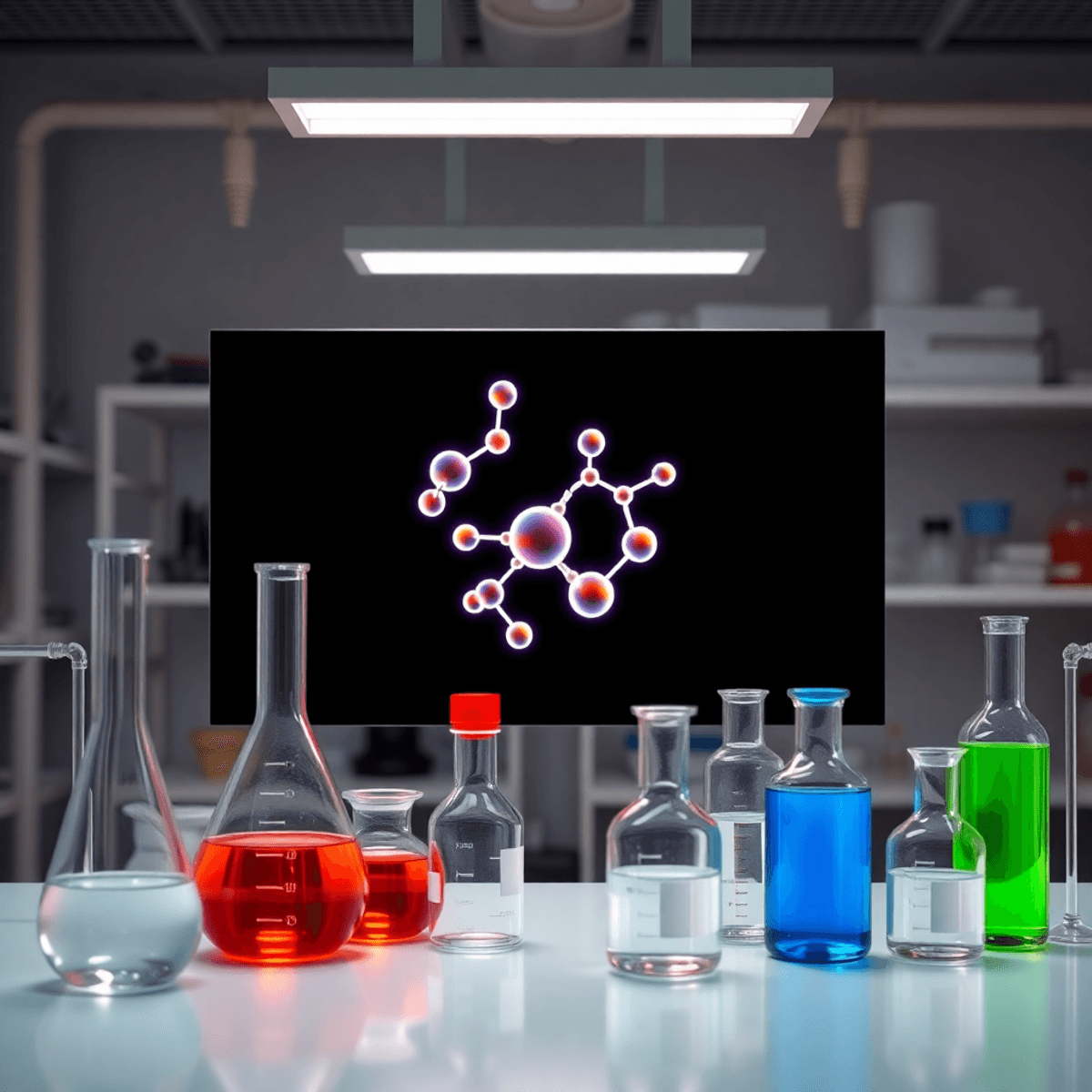What are Research Chemicals? A Comprehensive Guide

Understanding Research Chemicals
As a researcher in psychopharmacology, I've observed that research chemicals represent a unique category of substances specifically synthesized for scientific investigation. These compounds, often referred to as "designer drugs" or "novel psychoactive substances," are created to study biological processes, develop new medications, or explore chemical reactions in laboratory settings.
Functions of Research Chemicals
Research chemicals serve critical functions in medical and scientific research:
- Drug Development: Testing new therapeutic compounds
- Neuroscience Studies: Understanding brain chemistry
- Pharmacological Research: Investigating drug interactions
- Chemical Analysis: Developing detection methods
Legal Considerations for Research Chemicals
The legal landscape surrounding research chemicals is complex. While these substances are legal for research purposes when properly licensed, their status becomes murky when distributed for human consumption. Many countries have implemented blanket bans or analog acts to control these substances.
Key regulatory considerations include:
- Strict licensing requirements for possession
- Controlled substance classifications
- Documentation of research purposes
- Storage and handling protocols
Characteristics of Legitimate Research Chemicals
It's crucial to note that legitimate research chemicals are:
Manufactured under controlled conditions
Subject to quality control measures
Accompanied by detailed analytical data
Restricted to authorized research facilities
The distinction between authorized research use and illicit distribution has become increasingly important as these substances enter recreational markets.
Diving into Different Types of Research Chemicals
As a researcher in this field, I've observed several distinct categories of research chemicals, each designed to produce specific psychoactive effects. Here's a breakdown of the main types:
1. Synthetic Cathinones
- Bath salts and plant food derivatives
- Stimulant effects similar to cocaine or amphetamines
- Common variants: Mephedrone, Methylone, MDPV
2. Ketamine Analogs
- Dissociative substances mimicking ketamine
- Altered perception and detachment from reality
- Examples: Methoxetamine (MXE), Deschloroketamine
3. Synthetic Cannabinoids
- Often sold as "Spice" or "K2"
- Bind to cannabis receptors in the brain
- Significantly more potent than natural THC
4. Novel Hallucinogens
- Research chemicals based on classical psychedelics
- Include NBOMe compounds and 2C series
- Unpredictable effects at microscopic doses
The creation of these designer drugs involves subtle molecular modifications to existing substances. Chemists alter the basic structure of known drugs by adding or removing chemical groups, creating new compounds that produce similar effects but fall outside existing drug classifications. This process, known as chemical derivatization, allows manufacturers to temporarily bypass drug laws until legislation catches up with these novel substances.
The Dark Side: Recreational Use and Risks of Research Chemicals
As a researcher studying substance use patterns, I've observed several driving factors behind recreational research chemical use:
- Curiosity and Experimentation: Users seek novel psychoactive experiences
- Perceived Legal Status: The misconception that "legal" equals "safe"
- Cost and Accessibility: Lower prices compared to traditional street drugs
- Avoiding Detection: Research chemicals often bypass standard drug tests
These substances mirror the effects of conventional illicit drugs:
Research Chemical Similar to 2C-B | MDMA/LSD |
4-MMC | Cocaine/Methamphetamine |
JWH-018 | Cannabis |
The most concerning aspect I've encountered is the unpredictable nature of these substances. Users essentially become unwitting test subjects, facing:
- Unknown Dosage Requirements: Potency can vary dramatically between batches
- Untested Drug Interactions: No clinical studies on mixing with other substances
- Mystery Mechanisms: Limited understanding of how these chemicals affect brain chemistry
- Unreliable Manufacturing: No quality control or standardization in production
Research shows users often underestimate these risks, assuming similarity to known drugs equals comparable safety profiles. This dangerous assumption ignores the lack of historical usage data and established toxicity thresholds.
Behind the Scenes: Production and Distribution of Research Chemicals
As a researcher investigating the production landscape of research chemicals, I've observed concerning patterns in manufacturing and distribution methods. These substances often originate from unregulated laboratories, primarily located in countries with minimal oversight. The production facilities range from makeshift setups in residential basements to larger-scale operations disguised as legitimate chemical manufacturers.
Manufacturing Process
The manufacturing process typically involves:
- Synthesis of existing compounds with slight molecular modifications
- Use of readily available precursor chemicals
- Limited quality control measures
- No standardization of production methods
Distribution Network
The distribution network has evolved significantly with digital technology. Research chemicals are now predominantly sold through:
- Dark web marketplaces
- Private messaging apps
- Social media platforms
- Surface web vendors masquerading as legitimate chemical suppliers
Deliberate Mislabeling
A particularly concerning practice I've documented is the deliberate mislabeling of these substances. Sellers employ various tactics to circumvent legal restrictions:
- Marking products as "not for human consumption"
- Labeling substances as "plant food" or "bath salts"
- Using chemical formulas instead of common names
- Including disclaimers about research purposes only
Online Marketplace Operations
The online marketplace for research chemicals operates with remarkable sophistication, utilizing cryptocurrency payments and encrypted communication channels to maintain anonymity between buyers and sellers.
Health Risks, Addiction Potential, and Regulatory Challenges with Research Chemicals
As a researcher studying the impact of research chemicals, I've observed alarming health consequences that users face. The physical risks include:
- Severe agitation leading to dangerous behavioral changes
- Unexpected organ damage affecting multiple body systems
- Seizures and respiratory complications
- Loss of consciousness
- Life-threatening coma states
The psychological impact proves equally concerning. Users often experience:
- Intense auditory and visual hallucinations
- Severe paranoid episodes
- Time perception distortions
- Violent outbursts
- Persistent delusions
My clinical observations reveal concerning patterns of polysubstance abuse among research chemical users. Many individuals combine these substances with other drugs, creating unpredictable and dangerous interactions.
The withdrawal process mirrors MDMA addiction, presenting challenges for medical professionals. Symptoms include:
- Intense drug cravings
- Severe mood swings
- Physical tremors
- Sleep disturbances
- Cognitive impairment
Treatment protocols require specialized medical supervision in hospital settings. The standard approach includes:
- Medically monitored detoxification
- Psychiatric evaluation
- Individualized therapy programs
- Long-term recovery support
The regulatory landscape presents unique challenges. Law enforcement agencies struggle with:
- Rapidly evolving chemical formulations
- Unclear legal classifications
- Limited testing capabilities
- Cross-border distribution networks
- Underground laboratory operations
These substances exist in a legal gray area, making prosecution complex. Each new chemical variant requires separate classification, creating gaps in regulatory frameworks that manufacturers exploit to continue distribution.
Final Thoughts on the Complex World of Research Chemicals
As a researcher studying psychoactive substances, I've seen the devastating impact of research chemicals firsthand. These substances represent a dangerous mix of scientific innovation and recreational drug use. The constantly changing nature of research chemicals poses an ongoing challenge for healthcare providers, law enforcement, and society as a whole.
I urge readers to:
- Stay informed about emerging research chemicals in your community
- Share knowledge with friends and family about the severe risks
- Report suspicious activities related to research chemical distribution
- Seek professional help if you or someone you know is struggling with research chemical use
The temptation to experiment with these substances isn't worth the potentially life-changing consequences. Your life matters more than a temporary high.
FAQs (Frequently Asked Questions)
What are research chemicals and what purposes do they serve?
Research chemicals are substances used primarily in medical and scientific research to study their effects and potential applications. They are often chemically similar to established drugs but are designed for experimental use, with legal statuses varying across regions.
What types of research chemicals exist and how do designer drugs fit into this category?
Research chemicals include various categories such as synthetic drugs, designer drugs, MDMA analogs, ketamine analogs, synthetic cathinones, synthetic cannabinoids, and hallucinogens. Designer drugs are specifically created to mimic the effects of known illicit substances while bypassing existing drug laws through slight chemical modifications.
What are the health risks and dangers associated with recreational use of research chemicals?
Recreational use of research chemicals carries significant health risks including severe agitation, psychosis, seizures, respiratory failure, unconsciousness, and coma. Due to limited understanding of their toxicity and effects, users face unpredictable dangers such as hallucinations, paranoia, organ damage, and potential addiction.
How are research chemicals produced and distributed despite legal restrictions?
Research chemicals are often manufactured in unregulated laboratories and distributed through online platforms and social media. Sellers commonly label these substances as 'not for human consumption' to circumvent legal issues, making regulation and control challenging for authorities.
What challenges do authorities face in regulating research chemicals?
Authorities struggle with the ambiguous legal classification of many research chemicals and the constantly evolving nature of these substances. The rapid creation of new analogs designed to evade laws complicates enforcement efforts and poses ongoing regulatory challenges.
What treatment options exist for individuals addicted to research chemicals?
Addiction to research chemicals can manifest with withdrawal symptoms similar to those seen in MDMA addiction. Treatment typically involves medical supervision addressing both physical and psychological effects such as hallucinations and paranoia. Comprehensive care may include detoxification, counseling, and support for polysubstance abuse patterns.

